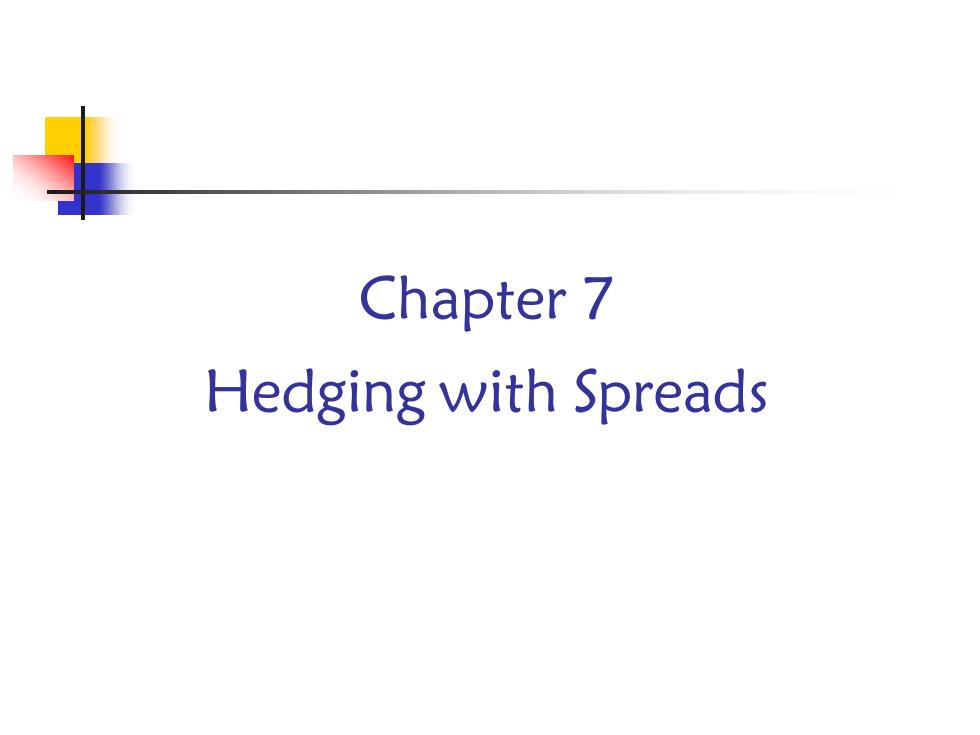
Chapter 7 Hedging with Spreads
Chapter 7 Hedging with Spreads
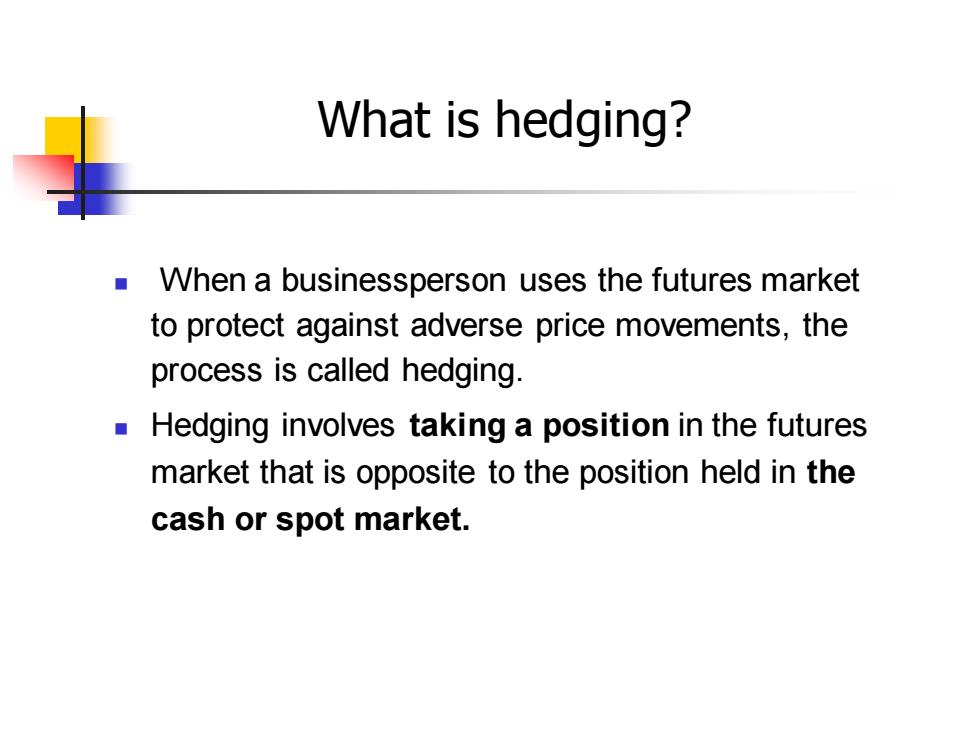
What is hedging? When a businessperson uses the futures market to protect against adverse price movements,the process is called hedging. Hedging involves taking a position in the futures market that is opposite to the position held in the cash or spot market
What is hedging? ◼ When a businessperson uses the futures market to protect against adverse price movements, the process is called hedging. ◼ Hedging involves taking a position in the futures market that is opposite to the position held in the cash or spot market
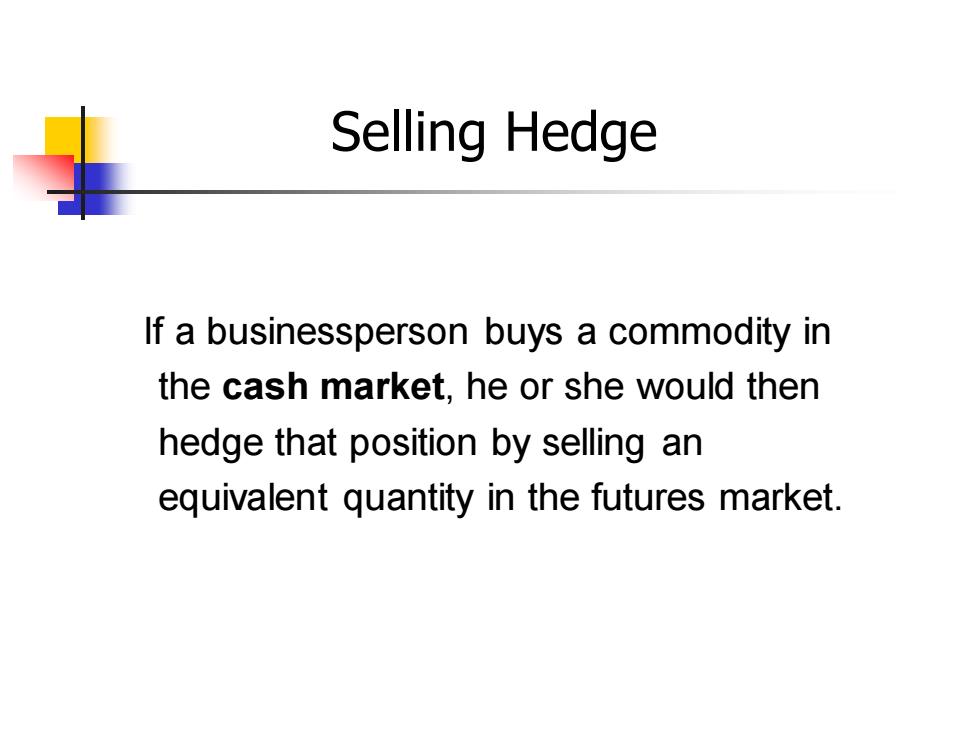
Selling Hedge If a businessperson buys a commodity in the cash market,he or she would then hedge that position by selling an equivalent quantity in the futures market
If a businessperson buys a commodity in the cash market, he or she would then hedge that position by selling an equivalent quantity in the futures market. Selling Hedge
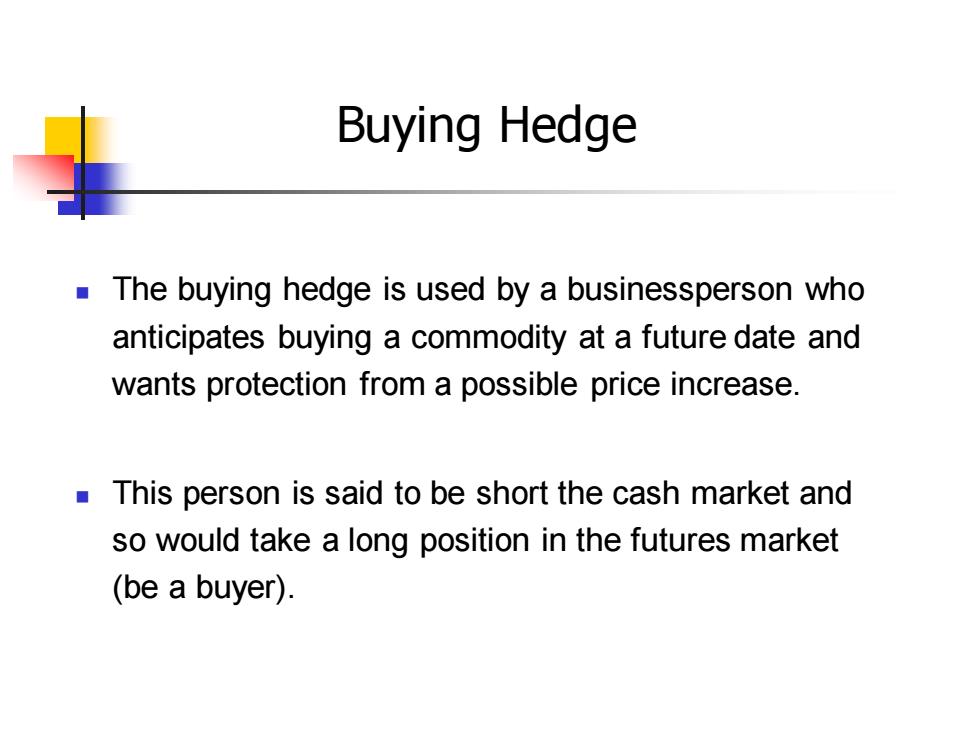
Buying Hedge The buying hedge is used by a businessperson who anticipates buying a commodity at a future date and wants protection from a possible price increase. This person is said to be short the cash market and so would take a long position in the futures market (be a buyer)
◼ The buying hedge is used by a businessperson who anticipates buying a commodity at a future date and wants protection from a possible price increase. ◼ This person is said to be short the cash market and so would take a long position in the futures market (be a buyer). Buying Hedge
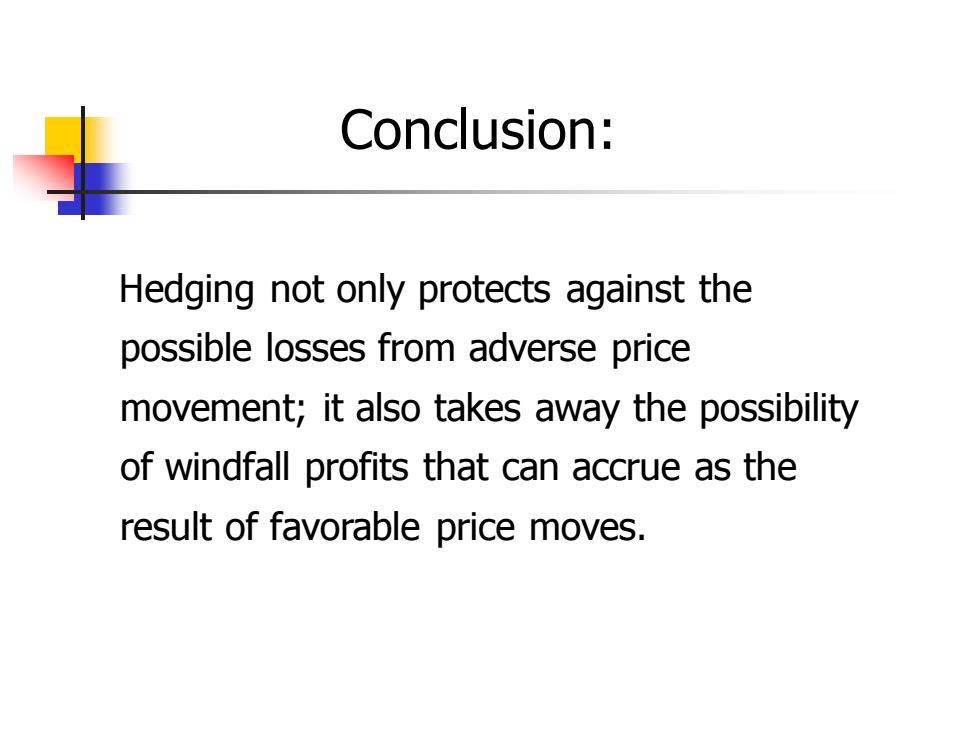
Conclusion: Hedging not only protects against the possible losses from adverse price movement;it also takes away the possibility of windfall profits that can accrue as the result of favorable price moves
Hedging not only protects against the possible losses from adverse price movement; it also takes away the possibility of windfall profits that can accrue as the result of favorable price moves. Conclusion: